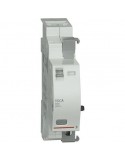- ELECTRICAL NEWS
- 0 likes
- 394 views
- 0 comments

Characteristics of Electrical Sockets
Electrical sockets play a fundamental role in every domestic and industrial electrical system. But what makes each outlet unique? Let's explore their main features together.
Diversity of Conformations
One of the first things that catches your eye when looking at electrical sockets is the variety of their shapes. Some appear rounder, others more square, and each of these conformations has been designed to meet specific use and safety needs.
Meaning of Technical Differences
The differences between the types of sockets are not merely aesthetic but have a fundamental technical implication. Each type of socket follows specific voltage and current standards, making them suitable for certain electrical devices.
The Types of Sockets on the Market
Let's discover together the main types of electrical sockets available on the market and their specificities.
Socket with Italian plug
-
Designed according to the Italian standard, these sockets are among the most common in our homes.
He took Schuko
-
Of German origin, characterized by greater security thanks to the presence of physical land.
American sockets
-
Recognizable by their compact size and two flat poles, they are widely used in the United States.
Adaptable sockets
-
These sockets allow the use of devices with a plug of a different type from that of the domestic socket, thanks to special adapters.
Features of the P10 Electrical Socket
Traditional Italian Design
The P10 socket, highlighted in the image below, represents the classic solution used in numerous Italian homes. This is a type of standard socket capable of managing a maximum current of 10A, equivalent to an estimated power of around 2200W.
Safety Precautions for Use
- The three characteristic input holes of this socket are located very close to each other. This specificity requires caution when using any adapters designed for 16A sockets. The use of such adapters can in fact increase the risk of current overload.
- It is strongly discouraged to exceed the supported current threshold, as this could cause serious problems, putting user safety at risk.
Tips for Safe Use
To avoid inconveniences related to current overload, it is important to pay attention to the type of devices that connect to the P10 socket. Make sure that the sum of the power absorbed by the various devices does not exceed the maximum limit supported by the socket.
Electrical socket: main features
When it comes to electrical outlets, there's a lot to consider beyond just power functionality. For example, features such as hole spacing and supported current can make a big difference.
Features of the P11 socket
A notable example in this area is the P11 socket. This model is very similar to its counterpart, the P10 socket, but has some key distinctions that directly affect its functionality and application.
- Supported current: One of the main differences is the ability to support a maximum current of 16A. This means that the P11 socket can handle an approximate power of 3500W, making it suitable for equipment that requires more power.
- Distance between holes: Another distinctive aspect of the P11 socket compared to the P10 is the greater distance between the holes. This feature can be crucial for specific applications where connector size and available space play an important role.
In conclusion, the choice of an electrical socket such as the P11 should be guided by specific considerations regarding the current needs and the physical adaptability of the device you intend to connect. Knowing the technical characteristics in detail can help you select the product best suited to your needs.
Know the P17/11 Socket
Today, the most used socket in the field of electrical systems is the P17/11. This particular socket, also known as the bivalent or double-step socket, presents itself as an excellent solution for those looking for versatility and practicality. Its popularity comes from its ability to accommodate plugs of two different sizes.
The evolution towards the Bivalent Grip
The P17/11 represents a perfect mix between two types of sockets previously in use: the P10 socket and the P11 socket. This innovative product allows you to overcome the need to choose between an exclusive socket for 10A plugs (the so-called small plugs) or for 16A plugs (large plugs).< /p>
Advantages of the P17/11 Socket
- Versatility: Allows you to use appliances with plugs of different sizes without the need for adapters.
- Practicality: Ideal for all those contexts in which there are devices with different power requirements.
- Safety: Designed to ensure the safe connection of devices with different amperages.
In conclusion, the P17/11 socket is confirmed as one of the most efficient and versatile solutions on the current electrical socket market. Its ability to adapt to plugs of different sizes makes it a preferable choice in both domestic and professional environments, always guaranteeing safety and practicality.
Characteristics of P30 Schuko sockets
The so-called schuko sockets, technical term P30, are known for their distinct characteristics in both form and function. A fundamental peculiarity lies in the way in which the plugs are connected: specifically, the "German" plugs which are characterized by the two flat contacts on the sides, essential for earthing the device.
Main Applications
This type of socket is widely used in areas where high power absorption is required. It is typically used to power equipment such as ovens, air conditioners, refrigerators and water heaters. The use of P30 Schuko sockets is synonymous with a search for greater safety in the electrical system, essential in equipment with high energy consumption.
Sizing and Installation
A crucial aspect to consider when installing Schuko sockets is the dimensions. By occupying two modules in one support, it is necessary to provide adequate space for installation, thus guaranteeing the effectiveness and safety of the system.
Advantages of Schuko sockets
- Greater safety thanks to earthing
- Suitable for appliances with high energy consumption
- Standardized and safe installation


Comments (0)